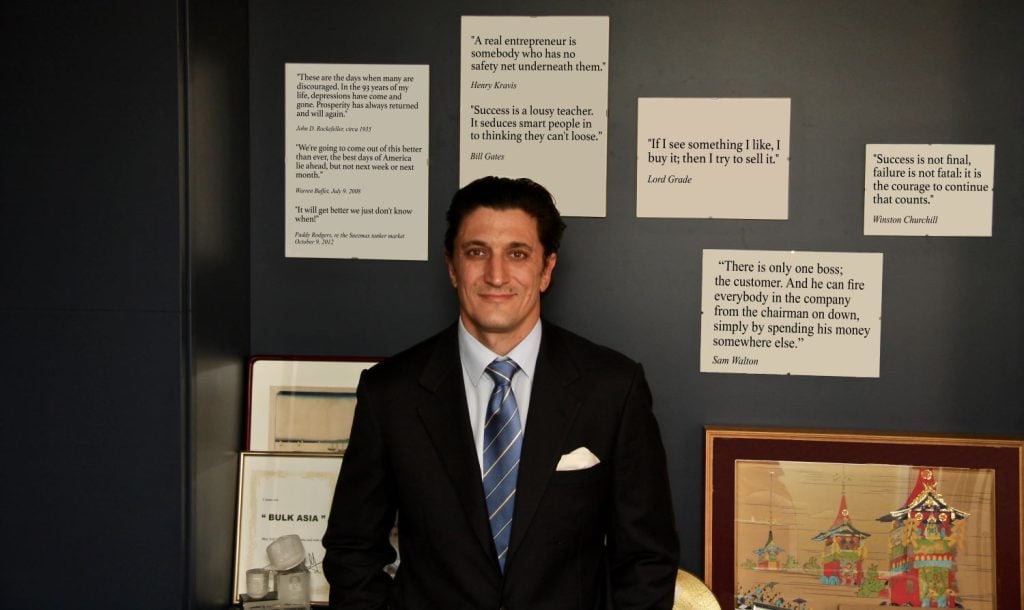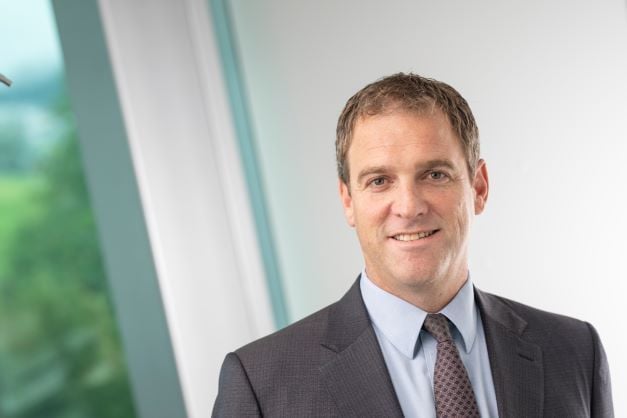John Michael Radziwill: Powered by thought
John Michael Radziwill, CEO of shipowner and manager CTM talks about the power of collective knowledge and maps a pathway to greener operations for shipping.

John Michael Radziwill, CEO of shipowner and manager CTM
Can you tell us a bit about CTM and how it operates?
We are a shipowner and ship manager with a fleet of 200 vessels including through joint ventures and charters – and we have a financial interest in 63 of these ships. A lot of the assets we manage are our own – and we work through what we call thought partnerships.
We have 31 different clients, including ourselves, so that’s 31 different perspectives on what is driving markets and how to optimise our operational efficiency when managing these assets. We want to find the most opportune or creative way to manage the assets entrusted to us so we are open if someone has a way to do it better.
Are we likely to see more consolidation in the dry bulk markets and what advantages or disadvantages could this bring?
I don’t see any disadvantages – and several advantages to consolidation! Commercial consolidation usually happens in low markets, like the current one where it makes sense to market and trade cargo ships under one entity and share all the revenues. You both reduce fragmentation and have better information, because unlike being one ship by yourself, you are one ship in a pool of 100. Additionally, timing is everything in shipping. If you are a single ship or a small fleet and there is a delay, this can have a significant hit on your revenues and knock on effects.
Also luck will play a big part on your bottom line, since if you are unlucky with rates for your asset, you are locked in until that contract ends. By contrast, if you have 100 ships, you can redeploy a different ship if there is an issue. Plus you smooth out the peaks and the troughs for revenues, and eliminate randomness. I think the more you can eliminate randomness, the better it is.
What do you see as the benefits of operating vessels in a pool in the current market?
I think commercial cooperation should be flexible with as many ships as possible that should be able to come and go rather than directional positioning by a lot of ships. In the latter you are locked into Contracts of Affreightment (COAs) and need vessels to cover them, which takes away your flexibility.
We designed our Capesize, Supramax and Panamax pools to have this agility. Ships can come in with three months’ notice and leave with three months’ notice – or really, at the end of your voyage. This is the same as having a single ship in a spot market. If the owner wants to take a directional view, perhaps to de-risk their long shipping risk, then they can take their ship out of the flexible cooperation, and fix it in the time charter market, or sell it – all of which would require a three month window anyway. We don’t want to take away any flexibility from owners.
Agile scaling up has improved our performance. Our Capesize pool performed at around 14% better than the Baltic Capesize Index in 2022, net of differentials and fees – and our Supermax pool performed 8% better than the Baltic Supramax Index, net of differentials and fees. So the benefit of being in our pool versus the spot market was between $600,000 to $800,000 per ship, which is pretty substantial, particularly for owners with multiple vessels in our fleet.
You mentioned thought-partnerships as a major factor of your success – can you elaborate?
We’ve been operating ships for a long, long time together with our clients and we objectively take in different views and administer them properly. This is not a case of too many cooks spoiling the broth, but many cooks working to get the broth exactly right. We don’t get pulled in too many different directions since our clients are very experienced in this space – and in some aspects, they are more experienced than us. So we maximise the benefits of everyone’s knowledge.
What we have created is an active partnership for the pools’ strategies, with CTM handling the implementation, administration and people management. Not all our clients contribute to the thought partnership – and they are not forced to. But when a client has assets that are worth millions of dollars, the majority want to discuss what their manager is doing with them.
How are your vessel pools preparing for the CII certificates that will be issued next year and how do you think this regulation will change the market?
Rules are rules, so of course we are working towards the good CII certificates. It’s an ever–evolving process, because through the thought partnerships we are fine tuning our ideas. We’re always trying to enhance our data collection in order to really understand what’s going on. A ship’s CII rating will definitely matter more in a low-rate environment than in a high rate environment.
In my experience, in a high-rate environment, people will focus more on price, with the environment being a lower priority. After all, you buy or rent the best you can afford. And if what you can afford is a ‘D’-rated ship, that’s what you will take. In fairness, that’s what has happened historically and I would expect that at a certain rate level, the rating will start to really matter again – but either way, we will be prepared.
What more do you think shipping needs to do on the environmental front?
Frankly, I think that shipowners have done a pretty good job environmentally of keeping emissions down. Despite all the headlines, emissions have really gone down per tonne of cargo transported. My favourite thing to talk about is the benefits if we put a speed limit on the fleet. We would get past a lot of our emission targets very quickly. I think we’re getting there with the new regulations, but it just seems like a hard way – which I find personally frustrating.
Regarding a shipping speed limit, do you think that we would need a larger fleet if we slow speed, thus creating more overall emissions – or should everyone adjust their expectations for cargo transport?
So firstly, we already have plenty of ships, so filling the gaps caused by slow steaming won’t be an issue. But I think that the industry has been getting it wrong by not looking at the optionality offered by the speed of a ship. Slowing a ship down would make the freight pie bigger, and we would all be in a more lucrative business. Plus you could have more cargo per ship, which would bring down the fuel cost and ship emissions per tonne of cargo, because it would just be a much more efficient use of vessel space. It’s amazing that we haven’t embraced this mentality, particularly in 2021 when we had huge lines of congestion and ships were being ordered to speed to port just to wait there. I think this is simple-minded, short term thinking.
I’m fairly certain that no one cares if their bushel of wheat, barrel of crude oil, or tonne of iron ore arrives in port, five or seven days later – and you would be doing the environment and your bottom line a big favour. This is a similar logic as just–in–time, and I feel that the best way to kind of start to implement this is to put a speed limit on ships just like you have speed limits on highways.
Do you expect a boom in newbuild ordering in the near future?
I’m proud of being part of a dry cargo industry that has not over supplied itself in the past few years, especially in 2021 – although admittedly, a lot of that was because we don’t know what the new fuel sources are going to be. But I would argue that dry cargo owners have done a pretty good job of being disciplined – and unfortunately it will be very easy for all of us to remain disciplined in the current day rate environment. But even if it improves, we still don’t have a clear line of sight as to what the new fuel sources will be, so I’m not anticipating a boom.
What fuels are on your radar in the short and medium terms?
For the next five years, I think we will stay conventional. I think there’s a lot to be said about biofuels. And after that, it’s really anyone’s guess. I think it’s worth saying that the fuel consumption, the efficiency, environmental footprint and carbon emissions of the conventional engines are getting pretty good. In our fleet, we have seen that one of our 2010-built 180,000 tonne ships consumes 60% more fuel than our 2022-built 180,000 tonne ship. So in 12 years, you’ve had a 60% reduction in the amount of fuel consumption. That’s not only the engine, that’s also the hull design, fuel saving devices, etc. I think this was a normal evolution in shipbuilding and we have done a fairly good job, but we can do a lot better and be more efficient at reducing our emissions.
I think at a high level, being better to the environment comes down to being selfless, and not selfish. If we all were selfless, we would get there a lot quicker – and no one would lose commercial advantage.



